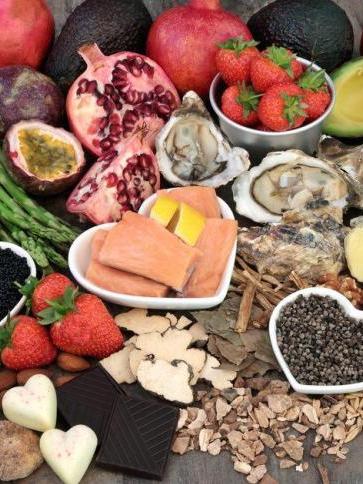The spices of this region do overlap slightly with ones used in South Asian/Indian and even Latin American cuisines (cumin and coriander, for example), but most are uniquely splendid in their flavor profile. So before the next time you find yourself tucking into that mezze platter or Adana kebab with friends, you may want to learn more about the wonderful spices that enhance these foods.

A maroon-black powder that comes from a wild berry, sumac is unique to Middle Eastern and Turkish cuisine. This sour spice is primarily used in the preparation of mezze (appetizers); for example, it is sprinkled over hummus before serving or added to salads like fattoush for tartness. Ground sumac is generally sprinkled over food right before serving. It is one of the main spices in the popular Middle Eastern spice blend za’atar.
Isot
A unique chili pepper flake, isot appears in two varieties as the chef at Bib Gourmand awarded Turkish restaurant Alaturka explains: the darker variety from an almost-black pepper is smoky and used primarily in the preparation of kebabs, while the redder variety is used more for mezze. It is also milder than most red pepper found in other parts of the world. Both versions of isot are equally delicious and uniquely Turkish.

Dry oregano might seem Italian but it is also one of the most popular Turkish and Middle Eastern spices. It's most commonly used in lamb dishes like kebabs, as a finish to stews as well as forming a vital component of the za’atar spice blend blend (see below). The herb is extremely fragrant, but should be used in moderation as it can get bitter.
Nigella Seeds
Known as black cumin in many parts of the world, these seeds impart a strong flavour and aroma when roasted or toasted and are often used as an inhalant to ease nasal congestion. These beautiful seeds add magic to freshly baked bread, which Alaturka does well with a generous sprinkle of Nigella over their freshly baked lavash.
Since fresh mint isn’t always easy to find, the locals often have dry mint on hand, which is used in teas and sprinkled on mezze platters and salads. Dry mint is easy to prepare at home (bake fresh mint leaves in a single layer in the oven for 2–3 hours) and an excellent aid to digestion.
Spice Blends
Za’atar, ras al hanout and baharat are popular spice blends. Popular in the Middle East, za’atar contains sumac, dry oregano, dry thyme, sesame seeds and salt. Sprinkled over some flatbread with some cheese and grilled in the oven, you can truly appreciate its delicious taste and appetising aroma. Ras al hanout is an essential Moroccan spice blend (similar to garam masala used in North Indian cooking) comprised primarily of cinnamon, cumin, coriander, nutmeg and peppers. Each household tends to have its own special recipe and spice variations. Baharat is Arabic for “spices” and is typically a blend of finely ground spices used as a condiment.
Spice blends are easy to make at home. Do keep in mind, however, that locals tend to use individual freshly ground spices rather than spice blends, which don’t keep as well for as long. Always keep spices away from light and heat to maximise freshness and, in fact, you may want to consider refrigerating any spice blends you bring back from your exotic travels.



















